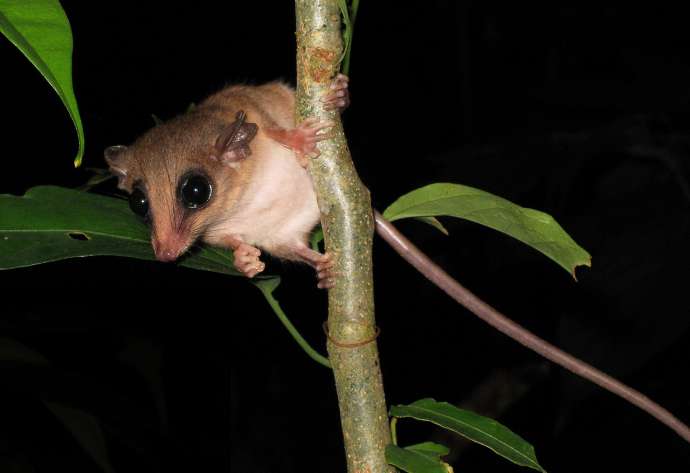Časoris is an online newspaper aimed at children. Each week we’ll take an article and post it here as a Slovene-English dual text.
Živali pod stresom
Animals under stress
Written by Dora Adamič, translated by JL Flanner & G Translate
Tudi živali se lahko znajdejo v hudi stiski.
Animals can also find themselves in dire straits.
Zaradi spreminjanja temperatur in krčenja gozdov jim zmanjkuje primernih zavetij in bivališč, zato so vse bolj v stresu. Podnebne spremembe namreč med drugim spodbujajo tudi tekmovalnost med posameznimi vrstami, kar živalim močno oteži preživetje.
Due to changing temperatures and deforestation, they are running out of suitable safe havens and homes, so they are increasingly under stress. Climate change, among other things, also encourages competition between individual species, which makes it very difficult for animals to survive.
Na udaru so predvsem sesalci v Atlantskem gozdu. To je drugi največji gozd v Južni Ameriki in nudi dom mnogim živalskim in rastlinskim vrstam. Njegova površina se zaradi človeških posegov vsako leto zmanjšuje. Zaradi izčrpavanja številnim vrstam grozi celo izumrtje.
Mammals in the Atlantic Forest are particularly affected. It is the second largest forest in South America and offers a home to many animal and plant species. Its area is decreasing every year due to human interventions. Because of its depletion, many species are even threatened with extinction.
Raziskovalna skupina, ki je preučevala tamkajšnje glodavce in vrečarje, je zato želela preveriti, kako različne živali ob čedalje bolj neugodnih razmerah doživljajo stres.
The research team, which studied rodents and marsupials there, therefore wanted to examine how different animals experience stress in increasingly unfavourable conditions.
Primerjali so stresne hormone tistih, ki živijo v bolj oškodovanih predelih gozda, in tistih, ki se zadržujejo v neokrnjenih predelih. Več tednov so analizirali njihovo dlako, saj se tam odlagajo stresni hormoni.
They compared the stress hormones of those living in more damaged areas of the forest and those staying in pristine areas. They analysed their hair for several weeks, as stress hormones are deposited there.
Ugotovili so, da je raven stresnih hormonov veliko višja pri živalih, ki živijo v predelih, na katere deforestacija bolj vpliva. Živali iz manj izpostavljenih okolij pa so kazale precej manjšo raven stresa.
They found that stress hormone levels were much higher in animals living in areas more affected by deforestation. Animals from less exposed environments, however, showed much lower levels of stress.
Stres sam po sebi za živali ni škodljiv. Lahko jim denimo omogoči hiter pobeg, saj se tako sprostijo dodatne zaloge energije. Toda dolgotrajni stres, pod kakršnim so ogrožene živali s poškodovanih območij, lahko pripelje do bolezni.
Stress in itself is not harmful to animals. For example, it can allow them to escape quickly, as this releases additional energy reserves. But prolonged stress, such as endangering animals from injured areas, can lead to disease.
»Če imamo na kupu veliko živali pod dolgotrajnim stresom, se lahko pri njih razvijejo novi virusi in druge bolezni. S teh živali bi se ti potem lahko prenesli naprej in prešli tudi na ljudi,« opozarja eden izmed raziskovalcev pri študiji David Kabelik.
“If we have a lot of animals all together under long-term stress, new viruses and other diseases can develop in them. These animals could then passed it on and pass it on to humans,” warns David Kabelik, one of the researchers in the study.
Read more stories and improve your Slovene at Časoris, while all our dual texts can be found here.






